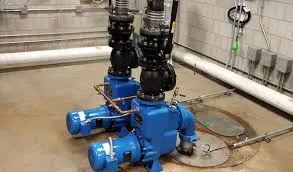Punjabi
- Afrikaans
- Albanian
- Amharic
- Arabic
- Armenian
- Azerbaijani
- Basque
- Belarusian
- Bengali
- Bosnian
- Bulgarian
- Catalan
- Cebuano
- Corsican
- Croatian
- Czech
- Danish
- Dutch
- English
- Esperanto
- Estonian
- Finnish
- French
- Frisian
- Galician
- Georgian
- German
- Greek
- Gujarati
- Haitian Creole
- hausa
- hawaiian
- Hebrew
- Hindi
- Miao
- Hungarian
- Icelandic
- igbo
- Indonesian
- irish
- Italian
- Japanese
- Javanese
- Kannada
- kazakh
- Khmer
- Rwandese
- Korean
- Kurdish
- Kyrgyz
- Lao
- Latin
- Latvian
- Lithuanian
- Luxembourgish
- Macedonian
- Malgashi
- Malay
- Malayalam
- Maltese
- Maori
- Marathi
- Mongolian
- Myanmar
- Nepali
- Norwegian
- Norwegian
- Occitan
- Pashto
- Persian
- Polish
- Portuguese
- Punjabi
- Romanian
- Russian
- Samoan
- Scottish Gaelic
- Serbian
- Sesotho
- Shona
- Sindhi
- Sinhala
- Slovak
- Slovenian
- Somali
- Spanish
- Sundanese
- Swahili
- Swedish
- Tagalog
- Tajik
- Tamil
- Tatar
- Telugu
- Thai
- Turkish
- Turkmen
- Ukrainian
- Urdu
- Uighur
- Uzbek
- Vietnamese
- Welsh
- Bantu
- Yiddish
- Yoruba
- Zulu
Telephone: +86 13120555503
Email: frank@cypump.com
ਨਵੰ. . 19, 2024 00:57 Back to list
sewage ejector systems
Understanding Sewage Ejector Systems An Overview
Sewage ejector systems play a critical role in the efficient management of wastewater in both residential and commercial settings. These systems are particularly valuable in scenarios where gravity alone cannot facilitate the flow of sewage to the main sewer line, such as in basements or low-lying properties. This article will explore the function, components, and advantages of sewage ejector systems.
What is a Sewage Ejector System?
A sewage ejector system, also known as a sewage pump system, is designed to transport sewage and wastewater from a lower elevation to a higher elevation. Unlike standard gravity-based drainage systems, these systems utilize mechanical pumps to lift and move wastewater to an appropriate discharge point. This is particularly beneficial in areas where sewage must travel vertically to reach a municipal sewer line.
Components of a Sewage Ejector System
The main components of a sewage ejector system include
1. Ejector Pump The heart of the system, this pump is specifically designed to handle solid waste and liquids. Ejector pumps are usually submersible and can operate continuously or as needed, depending on the flow of wastewater.
2. Holding Tank This is where wastewater collects before being pumped out. The tank is designed to store a certain volume of sewage and typically has a float switch that activates the pump when the water level reaches a designated height.
3. Discharge Pipe The discharge pipe carries the pumped sewage from the holding tank to the sewer line or a designated drainage area. This pipe must be sufficiently sized to accommodate the flow rate of the system.
sewage ejector systems

5. Power Supply Ejector systems require a reliable power source, as they are powered by electricity. Backup systems, such as battery backups or generators, are advisable to prevent failures during power outages.
Benefits of Sewage Ejector Systems
1. Flexibility Sewage ejector systems can be installed in locations where traditional plumbing may not be feasible. This flexibility makes them an ideal choice for basements, garages, and other lower-level areas.
2. Cost-Effectiveness While installation costs may be higher than traditional systems, sewage ejector systems can ultimately save money by preventing costly backups or damage due to wastewater overflow. Their efficient operation can also reduce overall water usage, leading to lower utility bills.
3. Durability Modern ejector pumps are designed to be robust and long-lasting, capable of withstanding harsh conditions. Regular maintenance can further extend their lifespan.
4. Environmental Protection By efficiently transporting sewage away from residential areas, ejector systems help protect local water resources from contamination. Safe disposal of wastewater contributes to a healthier environment.
Conclusion
Sewage ejector systems are invaluable for effective wastewater management, particularly in situations where traditional systems may falter. By understanding the components, benefits, and operation of these systems, homeowners and builders can make informed decisions about keeping wastewater systems functional and efficient. Investing in a sewage ejector system not only contributes to the integrity of plumbing infrastructures but also promotes public health and environmental sustainability. Whether in new constructions or retrofitting existing sites, sewage ejector systems prove their worth through reliability and efficiency.
-
Heavy-Duty Mining Sludge Pumps - Wear-Resistant Slurry Handling
NewsAug.02,2025
-
Horizontal Split Case Pump with GPT-4 Turbo | High Efficiency
NewsAug.01,2025
-
ISG Series Pipeline Pump - Chi Yuan Pumps | High Efficiency, Durable Design
NewsAug.01,2025
-
Advanced Flue Gas Desulfurization Pump with GPT-4 Turbo | Durable & Efficient
NewsJul.31,2025
-
ISG Series Vertical Pipeline Pump - Chi Yuan Pumps | Advanced Hydraulic Design&Durable Construction
NewsJul.31,2025
-
ISG Series Vertical Pipeline Pump - Chi Yuan Pumps | Energy Efficient & Low Noise
NewsJul.31,2025










